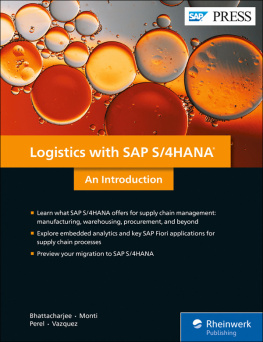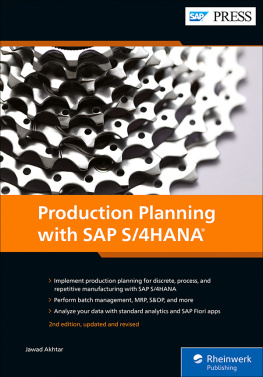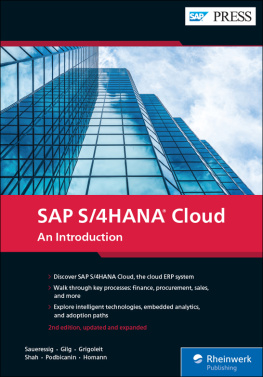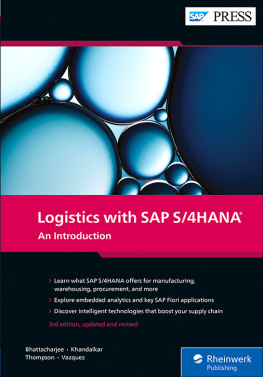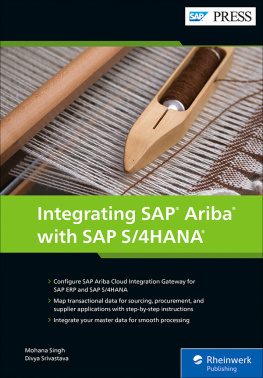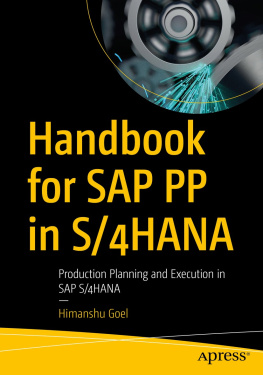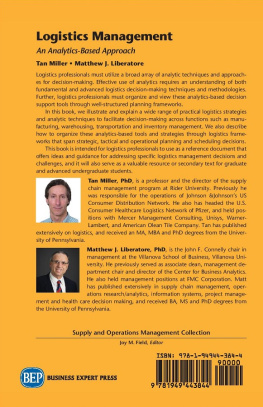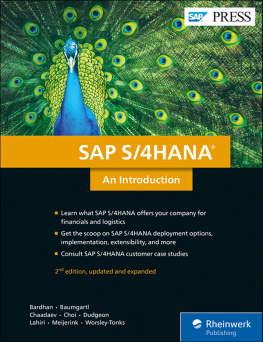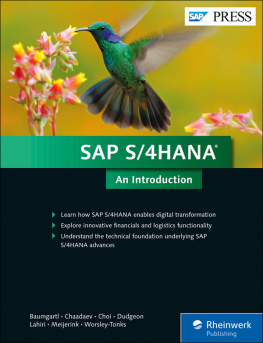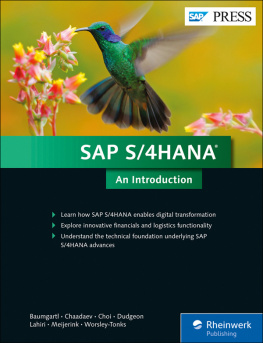This e-book is protected by copyright . By purchasing this e-book, you have agreed to accept and adhere to the copyrights. You are entitled to use this e-book for personal purposes. You may print and copy it, too, but also only for personal use. Sharing an electronic or printed copy with others, however, is not permitted, neither as a whole nor in parts. Of course, making them available on the Internet or in a company network is illegal as well.
For detailed and legally binding usage conditions, please refer to the section .
This e-book copy contains a digital watermark , a signature that indicates which person may use this copy:
You are reading this e-book in a file format (EPUB or Mobi) that makes the book content adaptable to the display options of your reading device and to your personal needs. Thats a great thing; but unfortunately not every device displays the content in the same way and the rendering of features such as pictures and tables or hyphenation can lead to difficulties. This e-book was optimized for the presentation on as many common reading devices as possible.
If you want to zoom in on a figure (especially in iBooks on the iPad), tap the respective figure once. By tapping once again, you return to the previous screen. You can find more recommendations on the customization of the screen layout on the .
Preface
The digital era is transforming every aspect of institutions, organizations, businesses, families, and individuals. Organizations that define their business transformation strategy by empowering their business operations through digital technologies are leading their respective fields.
Digital retailers are the new dominant force in the industry, gradually replacing traditional stores, while new technologically advanced automotive manufacturers are taking the lead among well-established automakers around the world. Digital technologies help organizations understand the demand for their products and services, and also help to organize, plan, acquire, and produce the supply they need.
But digital technologies are changing rapidly, and they require a steady digital platform. Selecting the right technology platform is a fundamental step toward organizational transformation. That's where logistics in SAP S/4HANA comes in.
With this book, we'll help you understand how to adopt and transform your logistics operationsto manage your inventories, to improve quality controls, to connect to, sell to, and manage your customers, and moreand analyze your business performance.
Who Should Read This Book?
This book is for anyone who seeks to understand supply chain business processes, functionality, and analytics in SAP S/4HANA, and desires to plan a conversion strategy for a business and IT implementation. Our target group includes IT executives, managers, consultants, power users, and business process owners or subject matter experts involved in the definition, planning, design, implementation, and adoption of SAP S/4HANA in the area of logistics.
What Will Be Covered?
The book begins by outlining the pillars and benefits of SAP S/4HANA logistics functionality in Chapter 1. Chapter 2 through Chapter 8 address functional groups by topic: inventory management, manufacturing, warehouse management, sourcing and procurement, sales order management, quality management, and plant maintenance. Each of these chapters discusses the business processes as designed within SAP S/4HANA, outlines key data simplifications, and then examines corresponding functionalities. They each weave in relevant SAP Fiori applications or reports, and explain connections to peripheral cloud supply chain management applications like SAP Ariba and SAP Hybris. Chapter 9 moves on to cover reporting and analytics within SAP S/4HANA. To conclude, Chapter 10 coaches business readers toward the next step (implementation) by explaining the process and requirements around system migration.
The book relies primarily on descriptions, screenshots, and diagrams to illustrate these functionalities and the available deployment options.
Lets take a look at each chapter.
Chapter 1: SAP S/4HANA for the Supply Chain
The objective of this chapter is to outline how three key pillarsthe database technology, business process improvements, and IT flexibilitycome together in SAP S/4HANA to offer customers substantial business benefits. The first section examines the SAP HANA foundation beneath SAP S/4HANA, the second section addresses simplifications delivered with SAP S/4HANA in the main logistics workflows (and what functional groupings appear in each), and the third section explains the on-premise and cloud deployment options and releases.
Chapter 2: Inventory Management
We begin with inventory management with SAP S/4HANA. The chapter opens with an overview of the inventory process enabled by SAP S/4HANA and explains important master data simplifications (for example the material master). The chapter then explores inventory functionality (warehouse processing, physical inventory, valuation, and more), operational reports, and relevant SAP Fiori applications. The chapter ends with an explanation of key strategic inventory reports.
Chapter 3: Manufacturing
The objective of this chapter is to highlight the business processes enabled by SAP S/4HANAs manufacturing functionality. It begins with an overview of the manufacturing process as envisioned with SAP S/4HANA and explains important master data simplifications (for example, the material master and bill of materials). The chapter then explores manufacturing functionality (MRP and production execution), operational reports, and relevant SAP Fiori applications. It ends with an explanation of manufacturing reports on equipment effectiveness and real-time manufacturing data.

